How to Select a CMS That Powers SEO, Personalization, and Growth

As the customer journey becomes more complex in 2025, organizations need a best-in-class martech stack to deliver a seamless, data-driven experience across multiple channels.
An essential part of this stack is the CMS, which must address the main challenges businesses face today:
Achieving visibility in multimodal search. Establish a presence in Large Language Models (LLM). Total cost of ownership management. Take advantage of AI opportunities.
Why is the right CMS an essential part of establishing a solid foundation?
A CMS is essential for creating personalized experiences and connecting customer touchpoints across all channels. It “enables organizations to collaboratively manage the creation, aggregation, orchestration and delivery of content to omnichannel touchpoints,” according to Forrester.
An ideal CMS should effortlessly manage discovery, experience, engagement, and conversions, ensuring your digital presence remains optimized for AI-driven search advancements. It should automate the resolution of website health issues, reducing the need for ongoing technical SEO work.
Let’s explore the key considerations when selecting or upgrading your CMS, focusing on the four crucial stages of the marketing journey:
Discovery. Experience. Conversion. Performance.
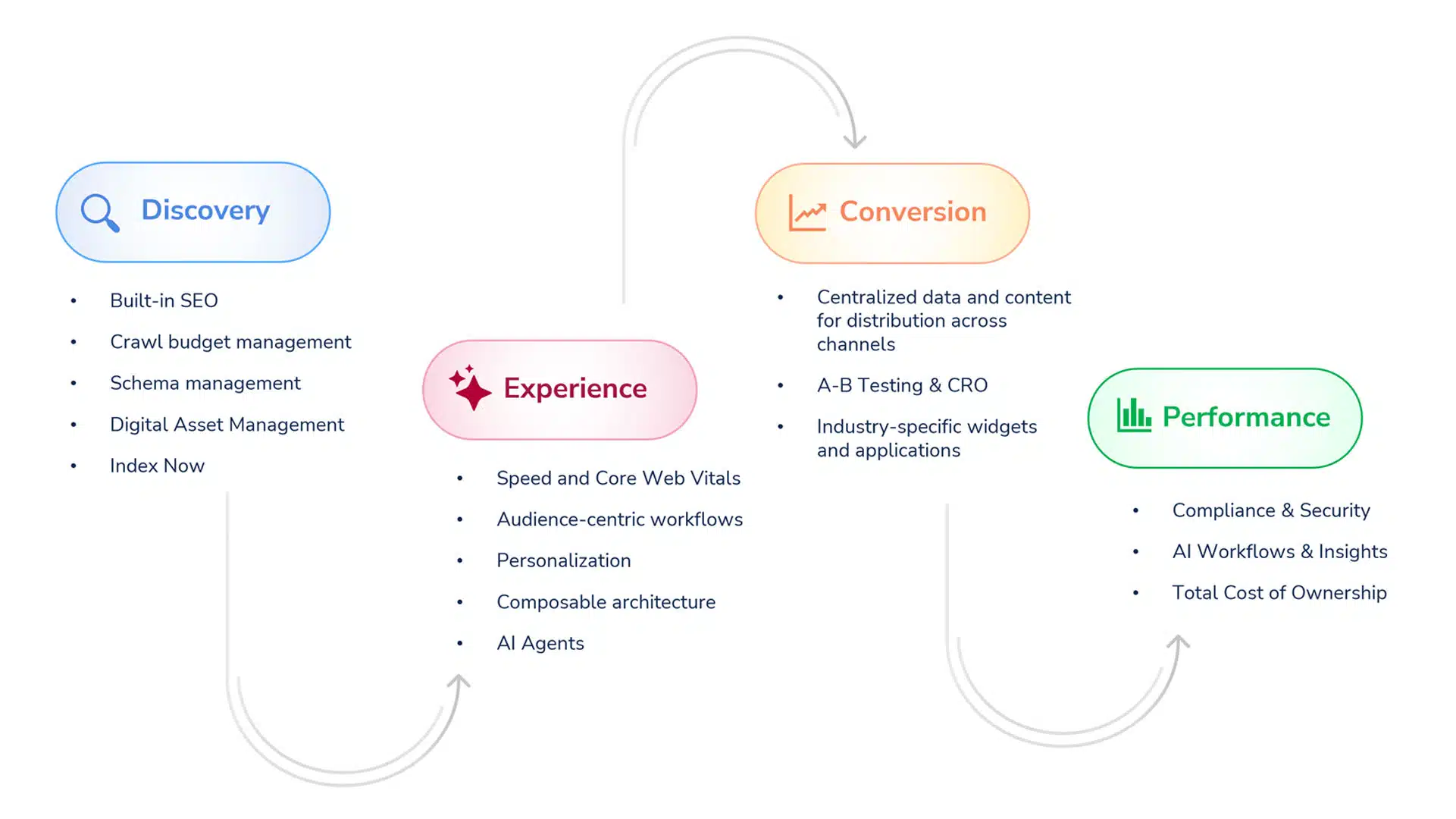

Discovery
Content Discovery and SERP Saturation
Content discovery and visibility across different search results are major challenges for organizations. With content spread across multiple platforms, it’s difficult to maintain consistent visibility. Many brands rely on paid advertising to compensate for poor organic discovery, even though consumers trust organic content more.
Your CMS should support content discovery by:
Effectively manage crawl budgets to ensure all content is indexed, crawled and rendered at high quality. Allowing easy addition and modification of schemas based on content architecture. Automation key SEO tasks like redirects, URL updates, sitemaps, breadcrumbs, and page speed optimizations, especially during site edits, migrations, or deletions.
A CMS with built-in discovery features is even better. It should support protocols like IndexNow to notify search engines of changes to site content.
Prioritizing SERP saturation and discovery features is essential for any brand.
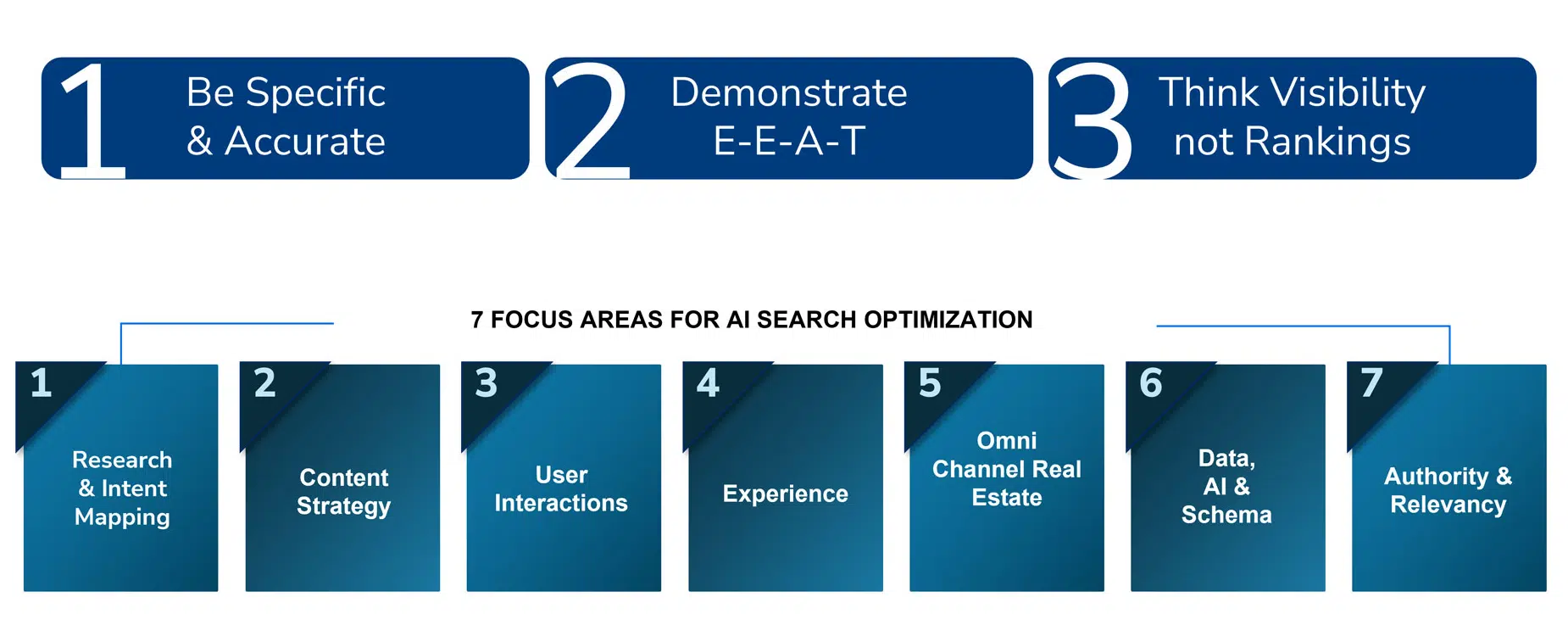

Dig Deeper: Why 2025 is the year of martech optimization, not expansion
Optimize your digital assets for enhanced discovery
Search is now multimodal, with consumers interacting via images, video, text and audio. To stay ahead, centralize, optimize and distribute your assets across all channels.
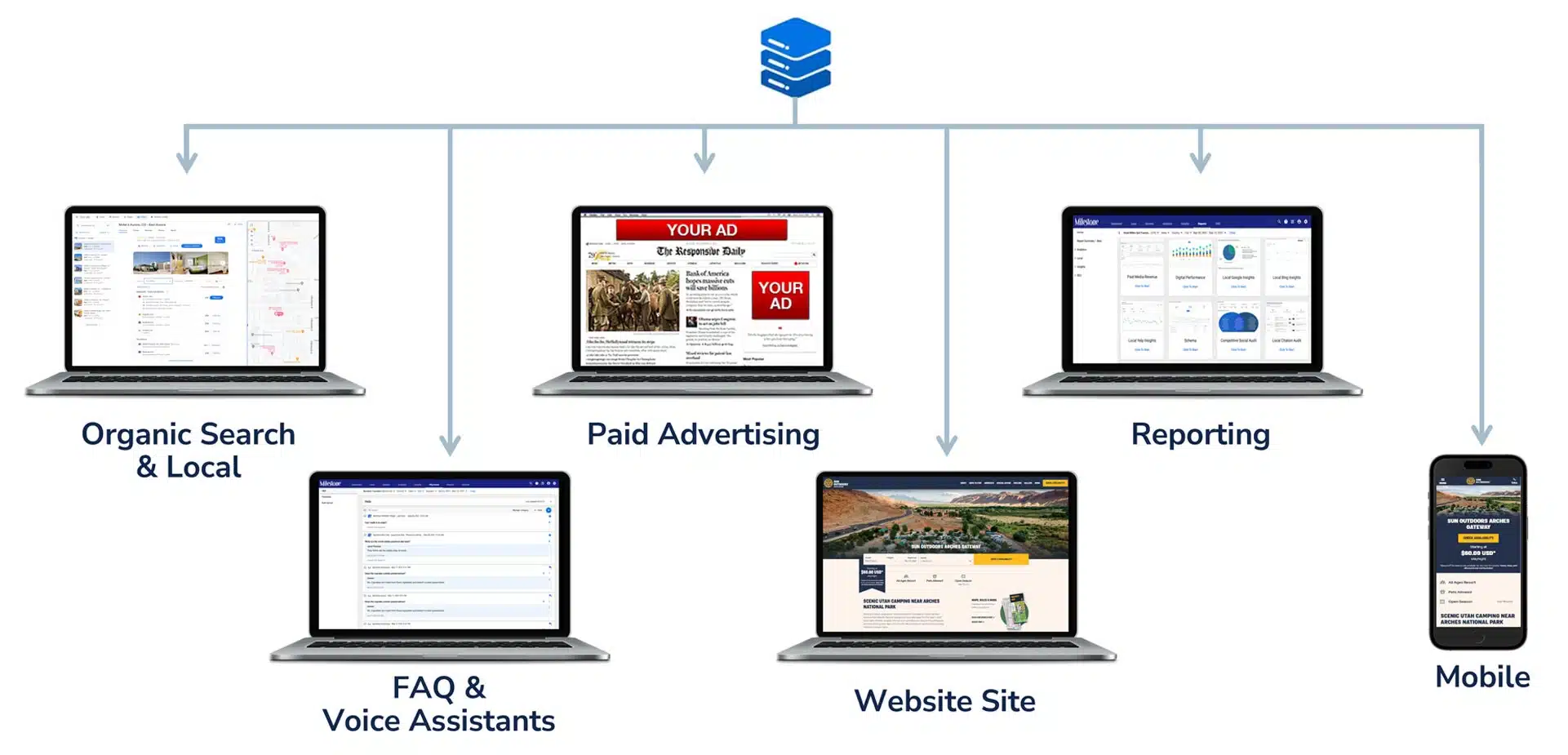

Experience
Once your content is discovered, the next goal is user experience. Personalization and A/B testing shouldn’t be an afterthought.
Your CMS should offer an easy-to-deploy solution backed by a framework that improves the experience and drives conversions.
Omnichannel experiences
In 2025, the customer journey will be more complex as users interact across different channels, such as images, videos, LLMs, social platforms, text and voice. Web traffic from traditional search engines could drop by 25%, Gartner predicts.
To ensure a smooth trip:
Use a CMS that supports automated and personalized workflows for different audiences. Establish a centralized information center with a separate data layer for flexibility. Automate rendering and publishing based on specific channels and audience needs.
Dig Deeper: Transition to headless CMS: The best of MarTechBot
Personalization
Traffic from traditional search engines is declining, especially among younger generations. Gen Z is increasingly turning to platforms like TikTok and Instagram for discovery, with nearly 40% bypassing search engines.
Brands that provide personalized, data-driven responses better engage users, driving loyalty and conversions. Effective personalization relies on:
Use customer data. Connect the customer journey. Streamlining content workflows.
Personalization includes location, channel and behavior-based approaches, with AI improving visitor segmentation, journey prediction and content creation.
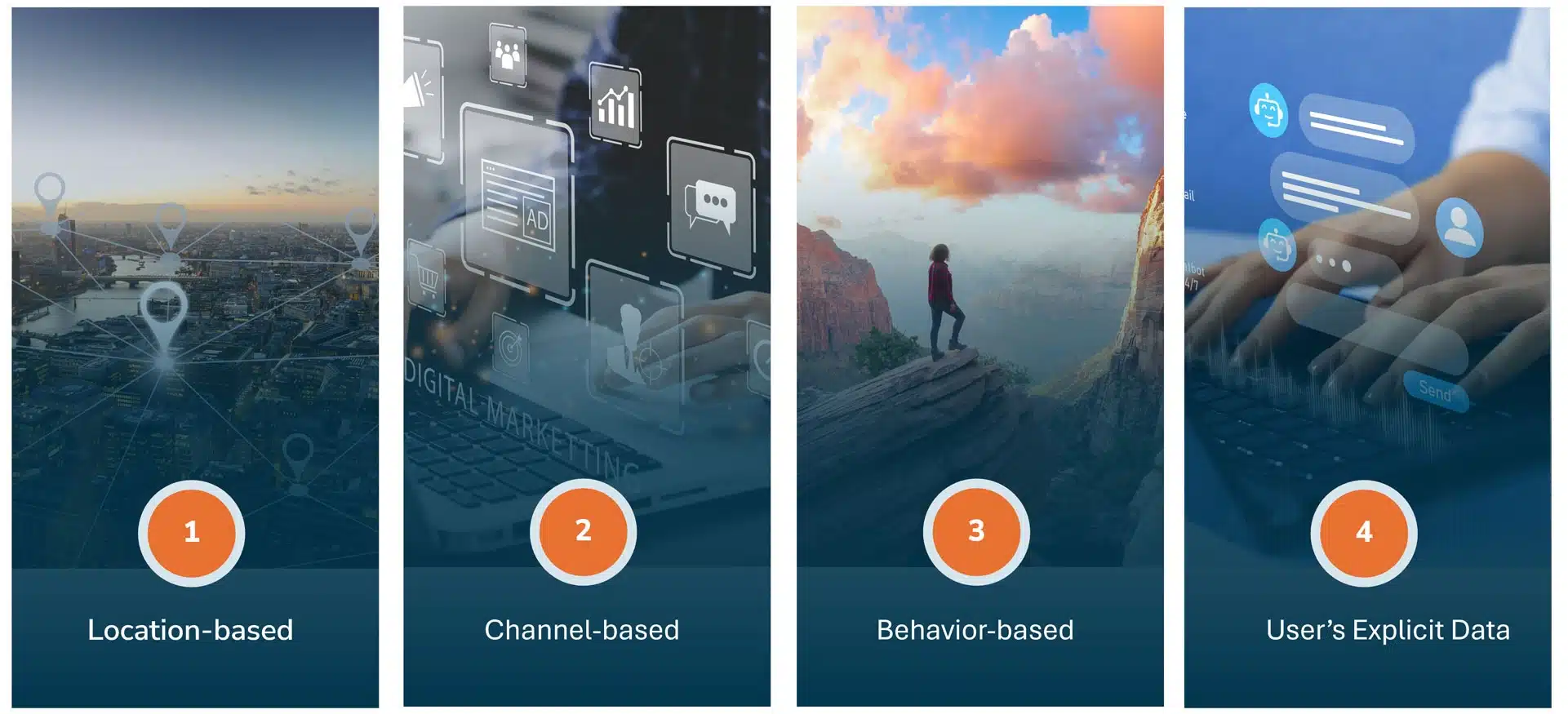

Dig Deeper: How to Grow Your Organic Reach with Behavioral Analytics Insights
Composable architecture
Customer journeys are increasingly complex and require flexible and scalable solutions. A “best-in-class” architecture, built on composable and cloud-native SaaS and microservices, aligns with MACH principles and promotes growth.
This approach improves user experience, reduces development time, reduces costs and makes systems scalable and robust, unlike rigid and monolithic systems. A CMS must offer:
API-based integrations for efficient data ingestion and emanagement. High availability, scalability and consistency. A robust partner ecosystem. Support for headless or hybrid configurations.
Conversion
After discovery and experience, focus on conversions. Key elements include:
Landing page optimizations. Conversion optimization and A/B testing. Limited time offers and coupons. Recovery of income. Widgets tailored to specific industries for engagement and conversions (e.g. online travel agencies, or OTAs, for hospitality).
To ensure seamless execution across all channels, your CMS must go beyond content management and enable scaling and consistency.
Centralized assets and knowledge center
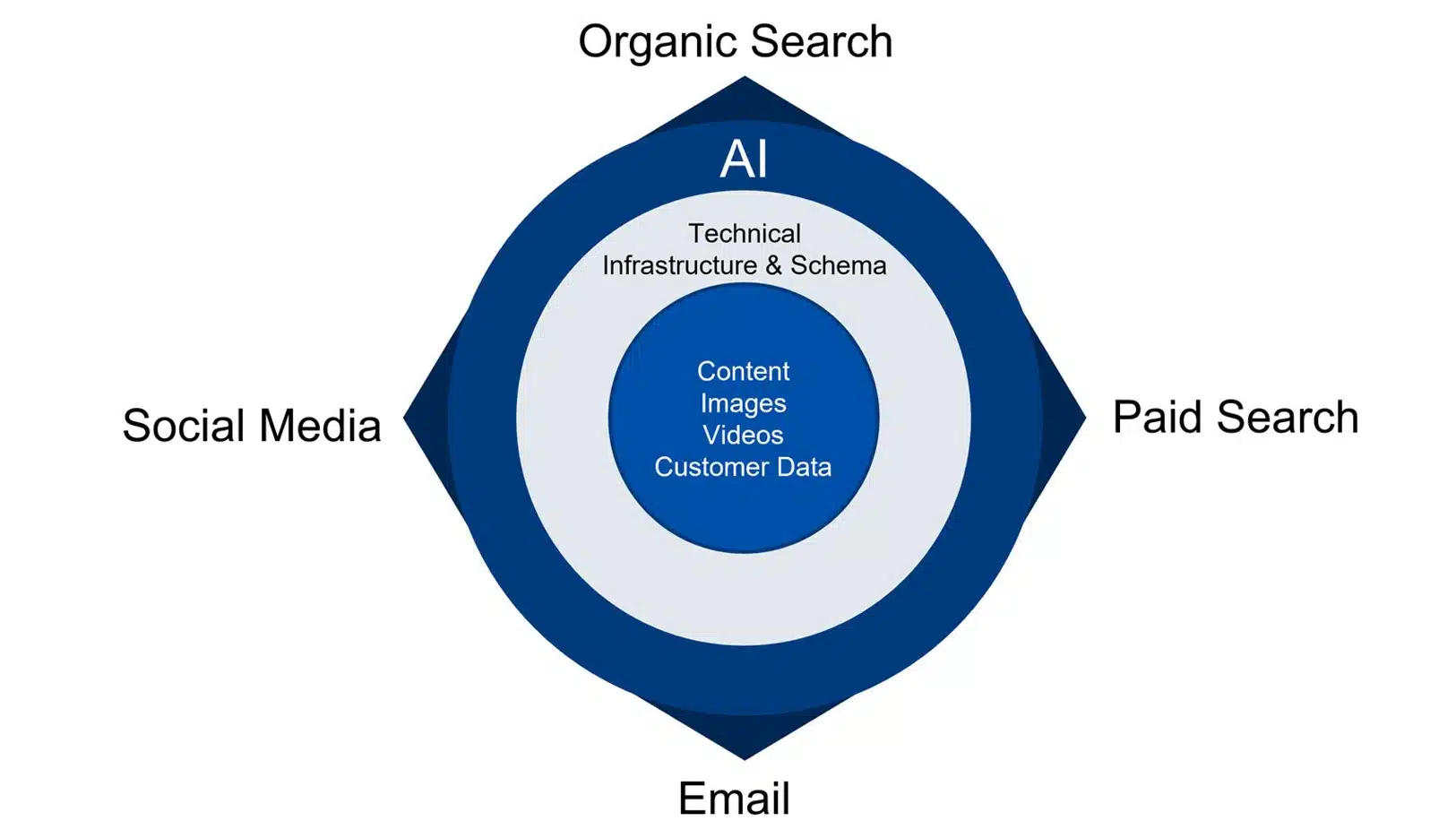

Content creation in a CMS has evolved. Businesses need company-wide taxonomies and metadata to align content with brand voice. A centralized hub breaks down silos, enabling resource sharing, better collaboration and faster content production.
Vertical specific applications
Does your CMS support industry-specific tools, such as travel apps, mortgage calculators, event calendars, or marketplace integrations?
Research developer communities and vertical applications to ensure the CMS meets your business needs.
Performance
A robust CMS should integrate site and campaign performance analytics, providing real-time insights across all channels.
Infrastructure, compliance and security
This has become the basis for creating a resilient and adaptable technology stack.
Secure cloud hosting with micro-container architecture is essential for high availability, disaster recovery and backups. A good CDN ensures fast website performance.
Multi-layer security with firewall, intrusion detection, secure code and DDoS protection provides robust defense. Compliance with GDPR, CCPA and ADA improves user trust and experience. Google proposed best practices for developers to ensure that the user experience of the website is secure and provides a safe browsing experience.
AI workflow
AI automates content creation, manages site migrations, and resolves technical SEO issues. A CMS integrating business insights, segmentation, and A/B testing streamlines workflows and optimizes results.
CMS-enabled AI agents can play an important role in providing content to various AI agents (i.e. chat agents and search agents). This will:
Improve user experience. Maximize conversions. Allow easy access to relevant information. Ensure faster query resolution.
Dig Deeper: Salesforce Agentforce: What You Need to Know
Total Cost of Ownership
When evaluating systems, focus on tools that provide a seamless customer experience. A CMS is at the heart of marketing success because it connects workflows and all stages of the customer journey.
Optimize your digital presence by choosing the right CMS
A good CMS should minimize time and cost with features like editable pages, reusable components, templates, built-in analytics, and AI-based automation. Developer support is equally essential.
Make sure the CMS provides comprehensive documentation and scalability for easy adoption, faster time to market, and long-term business growth.
Contributing authors are invited to create content for MarTech and are chosen for their expertise and contribution to the martech community. Our contributors work under the supervision of the writing and contributions are checked for quality and relevance to our readers. The opinions they express are their own.



